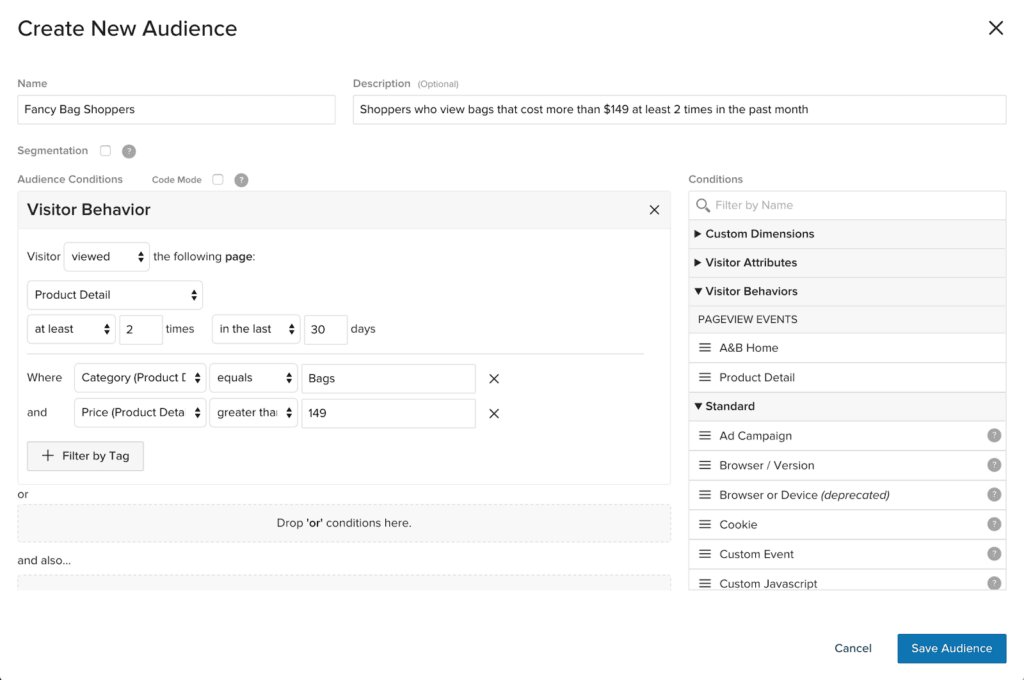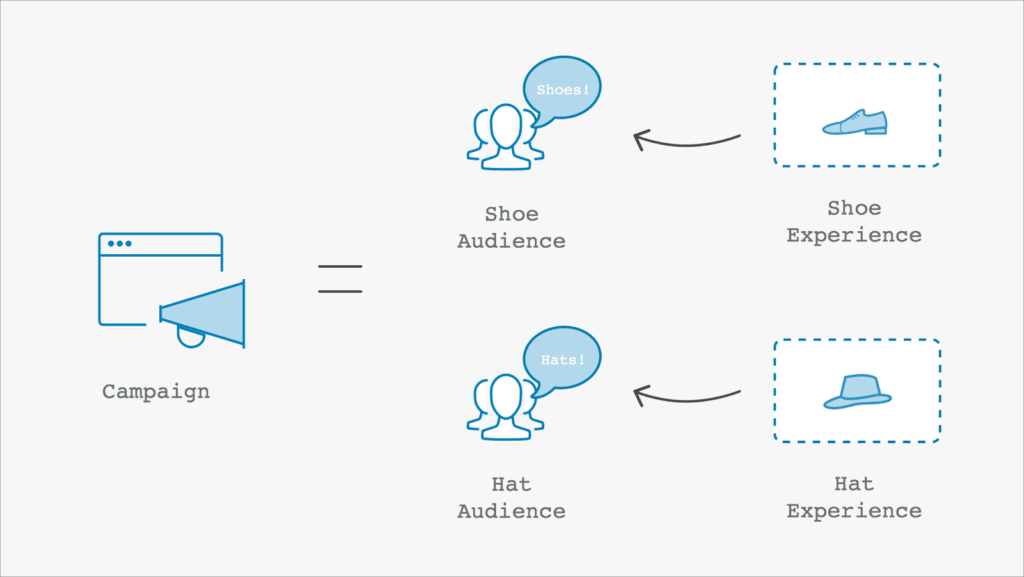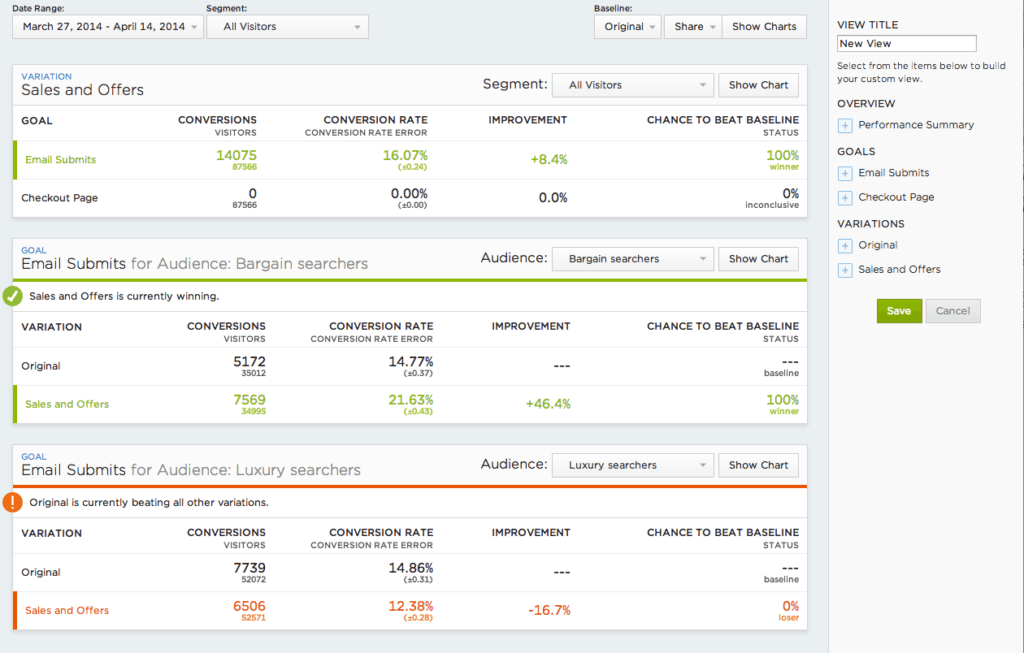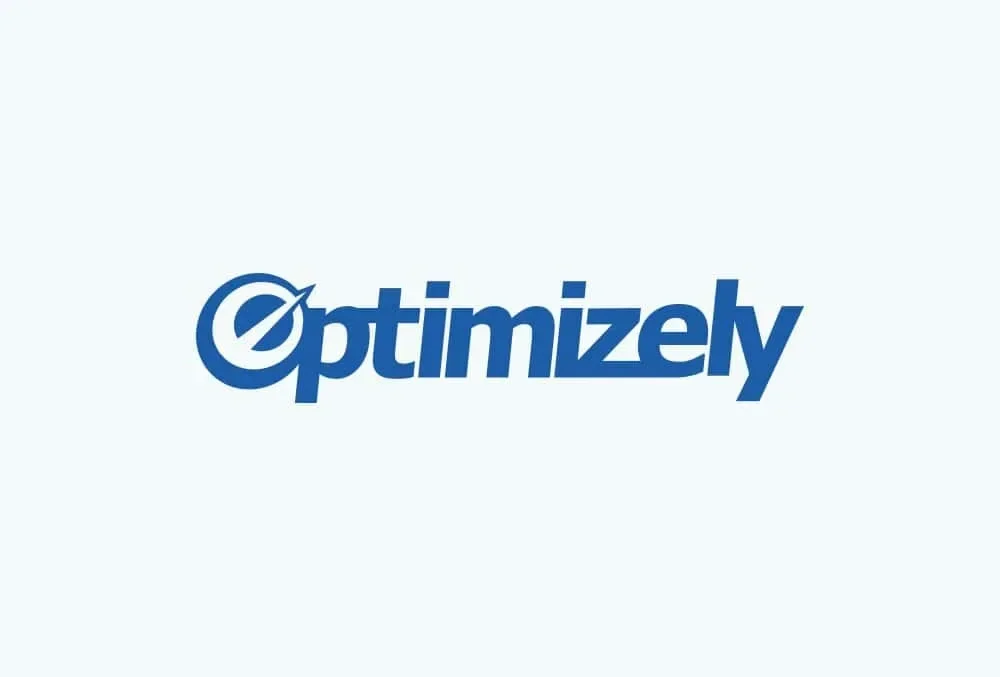Optimizely: 5 características y puntos fuertes
Optimizely es una potente herramienta de optimización de sitios web, mediante A/B Testing y personalización de contenidos.
Habiendo probado otras herramientas de objetivos similares, nos gusta destacar entre sus puntos fuertes: la gestión de audiencias, las herramientas WYSIWYG (aunque nunca se olvidan de facilitarte el acceso al código fuente, lo cual agradecemos infinitamente) y la integración con otras herramientas de análisis y tracking.
En un post anterior explicábamos qué es CRO (Conversion Rate Optimization), que conlleva irremediablemente la ejecución de tests A/B. Optimizely nos ayudará en nuestros proyectos de optimización de una forma muy detallada.
A continuación haremos una introducción a Optimizely a través de 5 características y puntos fuertes de esta magnífica herramienta:
1. A/B Testing
Es su funcionalidad principal y es así como nació. Así que está muy desarrollada, es intuitiva y muy potente.
Sin necesidad de tocar ni una línea de código (en Digital Menta, nos gusta mimar el código fuente de nuestros proyectos web, así que a veces preferimos tener el control de los cambios generados), Optimizely nos permite crear una o múltiples variantes de nuestra landing page (o sitio web), decidir qué porcentaje de usuarios dirigimos a cada variante y también hacerlo exclusivamente para audiencias personalizadas.
Los test A/B, en Optimizely, se llaman “experimentos” (igual que en otras plataformas) y nos permite ajustarlos y trackearlos en base a:
Objetivos
Podemos definir cuáles son los objetivos que queremos medir. Pueden ser:
- Clicks (habrá que decirle qué elemento/s de nuestra landing queremos medir)
- Visitas/pageviews
- Eventos personalizados: lanzar un popup, añadir un producto al carrito,…
Audiencias
Para cada proyecto, podremos definir unas audiencias específicas. Así, podemos ajustar nuestras mediciones y dirigir nuestros experimentos para los usuarios que cumplan ciertos requisitos. Las dimensiones que podemos utilizar para definir nuestras audiencias son muy amplias:
- Navegador
- Dispositivo
- Idioma
- Visitantes nuevos vs. recurrentes
- Sistema operativo
- URL con/sin cierto parámetro (útil para distinguir a nuestro tráfico de PPC)
- Referrer URL
- Hora
- Localización
- Lista personalizada
- Etiquetas personalizadas
Así podremos, por ejemplo, lanzar un experimento para nuestros usuarios de Noruega y otro para nuestros usuarios de Italia.

Creación de audiencias en Optimizely (source: blog.optimizely.com)
Dimensiones personalizadas (a través de la API)
En este punto, la cosa se empieza a complicar. Aquí vamos a necesitar a un programador… pero si llegas a tener la necesidad de implementar dimensiones personalizadas es porque ya cuentas con uno.
Una dimensión personalizada para segmentar un experimento podría ser, por ejemplo, distinguir a los usuarios de tu página según el tipo de usuario que son: premium, free, pendiente de activación,…
2. Personalización
Esta funcionalidad de Optimizely es relativamente nueva. Permite personalizar el contenido de tu landing page (o sitio web) para una audiencia definida. Es algo que está muy de moda entre los gurús del CRO (por ejemplo, en ConversionXL nos explican la personalización de contenido diferenciándolo de la customización. ¡Hilando fino!)
Pongamos un ejemplo de personalización:
En nuestro ecommerce vendemos zapatos a todo el mundo. En nuestra homepage promocionamos el artículo más vendido en el momento que, con toda seguridad, podría ser unas sandalias en verano y unas botas de agua en invierno… Pero, claro, mientras que nuestros visitantes argentinos están a 30º en Enero, nuestros visitantes españoles están pasando frío. La solución: definimos 2 audiencias sencillas, la que proviene de Argentina y la que proviene de España. A los primeros les mostramos una homepage promocionando sandalias y, a los segundos, promocionando el zapato más abrigado de nuestra colección.

Personalización en Optimizely (source: blog.optimizely.com)
3. Creación de audiencias/segmentos
Si has creado una campaña en AdWords o en Facebook, sabrás que creación de audiencias puede ser sumamente relevante y, en algunas plataformas, con escasas opciones.
Optimizely permite una segmentación avanzada. Sin entrar en segmentaciones customizadas, se pueden crear audiencias en base a las dimensiones que hemos citado un poco más arriba: navegador, dispositivo, idioma, visitantes nuevos vs. recurrentes, sistema operativo, etc.
Pero también se pueden customizar de una forma mucho más avanzada. La herramienta “Dynamic Customer Profiles” te permite crear perfiles de usuario en base a su comportamiento e intereses en cuanto a compras online, viajes y suscripciones en servicios B2B o SaaS.
Por último, integrando otras plataformas de segmentación (como nugg.ad o AdWords) en tu proyecto de Optimizely, puedes usar las audiencias que te proporcionan estas plataformas.
4. Integración con otras plataformas
Esta funcionalidad la han trabajado a fondo la gente de Optimizely. A nosotros nos parece fundamental, por ejemplo, poder generar mapas de calor en un experimento AB. Pues ahí está la integración con, por ejemplo, CrazyEgg.
También nos parece muy interesante la integración desarrollada para WordPress. Este popular CMS, junto con Optimizely, nos dará la posibilidad de crear experimentos y contenidos personalizados de forma sencilla y rápida para optimizar nuestro sitio web.
5. Medición y análisis de resultados
Lanzar un test AB, tener paciencia para esperar a los resultados, obtener un ganador… Y una vez que lo tienes, quieres saber los detalles. El expert UX encargado del proyecto querrá ver heatmaps, el account manager querrá saber que keywords han funcionado mejor, el director comercial querrá saber qué oferta ha atraído más a sus clientes, etc. Pues bien, los reportes generados por Optimizely son muy detallados, se pueden segmentar por todas las dimensiones de las que hemos hablado, objetivos definidos,.. Todos contentos!

Ejemplo de Result Analysis en Optimizely (source: help.optimizely.com)
EXTRA: La documentación y el soporte ofrecido por Optimizely es extenso y fácil. ¡Nos gusta!



